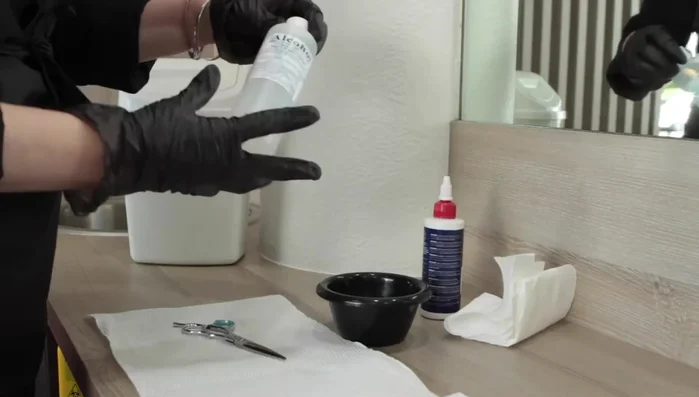Maintaining sharp, clean hair cutting scissors is crucial for achieving precise cuts and, importantly, preventing the spread of bacteria and viruses. Dull, dirty scissors not only compromise the quality of your work but also pose a potential health risk to your clients. From the subtle build-up of hair and product residue to the unseen presence of microorganisms, regular cleaning and disinfection are paramount for both professional stylists and those who cut hair at home. Proper sanitation ensures the longevity of your tools and contributes to a hygienic and safe environment.
This article provides a comprehensive, step-by-step guide to effectively clean and disinfect your hair cutting scissors, ensuring they remain in optimal condition for years to come. Let's delve into the process, covering everything from initial cleaning to proper sterilization techniques, leaving your scissors sparkling and ready for their next use.
Preparation and Safety Guidelines
- Gloves
- Apron
- Alcohol-based solution
- Paper towels
- Scissor/Clipper oil
- Scissor pouch
- Never immerse your scissors completely in water or any liquid. This can damage the screws, handles, and overall integrity of the scissors.
- Always use a soft, lint-free cloth to dry your scissors thoroughly after cleaning to prevent rust and corrosion. Air drying is also acceptable.
- Avoid using abrasive cleaners or scrub brushes on the blades, as these can dull or damage them. Gentle cleaning is key.
Step-by-Step Instructions
Prepare for Cleaning
- Prepare your workspace and protect yourself. Put on gloves and an apron.
- Prepare your cleaning solution. Pour alcohol-based solution into a bowl.

Prepare for Cleaning Clean the Scissors
- Wipe the exterior of the scissors with a clean paper towel dampened with the alcohol solution to remove dirt, bacteria, and product buildup.
- Open the scissors and carefully wipe the blades, avoiding crossing the blades. Clean from the outside only to remove dirt and hair.


Clean the Scissors Lubricate the Scissors
- Lubricate the scissors. Apply a small amount of scissor/clipper oil to the screw attachment, move the scissors back and forth to distribute the oil, and wipe off any excess.

Lubricate the Scissors Dispose of Waste
- Dispose of dirty materials properly.

Dispose of Waste Check Sharpness
- Test the sharpness of the scissors by cutting a small piece of hair. Ensure there is no bending of the head

Check Sharpness Store Scissors and Supplies
- Store the clean scissors in a clean, safe environment, such as a scissor pouch.
- Store cleaning products in a safe place, away from direct sunlight.


Store Scissors and Supplies
Read more: Salon Shear Sharpening: A Step-by-Step Guide for Hair Stylists
Tips
- Avoid crossing the blades when cleaning them to prevent damage.
- Use a small amount of oil to lubricate the scissors and prevent rust and maintain smooth operation.
- Regularly check your scissors for bluntness to ensure optimal performance.
- Store your scissors and cleaning supplies in a safe and organized manner to prevent accidents and maintain hygiene.








